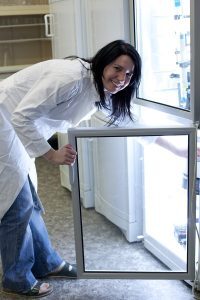If you have recently received a grant from a funding body, then you’ll probably have to demonstrate how well you are using that funding and the difference it is making. So how do you do that without it taking up too much of your research time? When you are evidencing return on investment (ROI), using a database system can be much easier than using Excel or a paper-based system. If you have an ‘off-the-shelf’ product that has ROI reports and tools already built-in – this is even better.
Choose measures that funders value
If you are running a Biobank and are being funded to support research, then simply having a rapidly growing number of samples in your stores doesn’t mean that you’re supporting research effectively. It just shows that you’ve got a rapidly growing collection. If, instead, you record the number of samples being dispatched to researchers then that’s of much more interest to a funder.
If you are in the early phase of establishing a Biobank and aren’t dispatching many samples yet, then you could report the number of samples that are visible to the research community. You could do this by recording the number of samples uploaded to a Biobank directory such as the UKCRC. Similarly, if you feature your Biobank on several websites or journals this could be a measure of your efforts to bring your samples to the research community.
Funders also want to see efficient processes. One of these could be the average time between sample collection and storage. You can use this measure to show the viability of your samples (good for both researchers and funders).
However, make sure that you choose measures that are of value to you too!
Have your benchmark data ready
If you’re implementing changes to an existing Biobank, perhaps with a new LIMS or sample tracking system, or are expanding or updating your processes, take “Before” and “After” measures. This will help prove any efficiencies you think you may have gained.
However, if are using an established system then you might want to compare evolving operating procedures or audit results. You could also think about measuring against industry average figures, where available, or against target figures set by you either internally or in your estimates to funders.
Use your system’s own features to help
If there are existing auditing features, then think about how you can use this data when evidencing return on investment. Using what you already have makes life much easier. It also helps avoid the temptation to over-interpret less accurate or out-of-date data. Remember that you might be asked to provide data to evidence your findings.
Measure to an appropriate accuracy
Don’t over-measure. You are not trying to account for every penny spent. You’re trying to work out a reliable indication of cost savings. Strategic decisions are based on percentages and averages over time, not on the individual units being measured. However, that doesn’t mean that the numbers mustn’t be accurate, just that you don’t have to quote them to the nth decimal place!
Evidencing return on investment ideas for processing labs
Sample process labs have different business aims and therefore need different measures to support different targets.
ROI measures for a sample processing lab could include:

- How long it takes you on average to find where a particular sample has been stored since receipt. An efficient process can be very useful for assessing sample viability and for evidencing HTA and GLP compliance.
- If you can easily see whether dispatched samples have been invoiced what any charges should be. This is important, whether for simple cost recovery or towards financial turnover.
- How long it takes you to receipt a batch of samples e.g. a 96-capacity rack of vials. This includes the time it takes for you to log them into the system, generate labels and allocate them to storage. Finding this out helps you to identify delays that can be costly both financially and in terms of test results.
Examples on how a Biobank can evidence return on investment
You probably established your Biobanks to support research. So, for you to achieve your goal your samples must be used. Therefore, an effective Biobank has a high turnover of samples rather than simply a large sample collection. If you’re storing samples unused in your freezers for years this isn’t helping research. Researchers have to see your samples to use them, so you need to make them visible. Also, you need researchers to be able to easily request them. You then need to turn any requests around quickly and do it cost-effectively.
ROI measures for your Biobank could include:

- Registering your samples with a national body such as UKCRC and making sure your information is up to date. This shows maximum visibility.
- How many samples you dispatched in the last calendar month and how this relates to your total sample holdings as a percentage. If you know this it can show a healthy sample turnover.
- On average the length of time you store a sample in your Biobank before it is requested by a researcher. Can you break this information down by sample type? This can show a healthy sample turnover or can identify sample holdings that aren’t attractive to researchers and are simply costing you to store.
- How many samples you have supplied to researchers in total versus your current holdings. This is a good measure of the benefit you have brought to researchers and is great for funders.
- How long it takes you to count samples dispatched in the last calendar month. This can show an efficient Biobank that can keep costs low.
- How long it takes you to action a withdrawal of consent, locating all existent samples and record their destruction. This can highlight high cost risks to an otherwise efficient Biobank.
In summary
Evidencing return on investment can be time-consuming. However, if you choose your measures wisely you can maximise the relevance and effectiveness of your findings. In addition, if you choose carefully you can find some good measures that are easy to produce. All this leaves you with more time to carry out your day job!

Comments are closed.